
When you open Strange 66, take a look beyond the all-American sheen to the seedy, creepy, and just plain weird stories behind America’s Mother Road.
Route 66 conjures images of an innocent golden age of car travel: shiny V8s powering down hot, two-lane blacktop, sucking 20-cent-a-gallon gasoline, and periodically depositing their occupants at mom-n-pop greasy spoons, neon-lit motels, and tourist traps. But America’s Mother Road wasn’t all about ruddy-cheeked, summer vacationers. Route 66 and the regions it traverses have a side more seldom seen, rich with weird tales (mimetic architecture, paranormal phenomena, and even cryptozoology) to the downright sordid and seedy (murder, mistreatment, and other assorted mayhem).
In Strange 66, bestselling Route 66 authority Michael Witzel explores the flip side of Route 66 to offer details on infamous Route 66 locations that once served as hideouts for the James Gang (Meramec Caverns), Bonnie and Clyde (Baxter Springs, Kansas), and Al Capone (Cicero, Illinois).
There are the stories of unspeakable crimes committed along 66, such as the Stafflebeck “murder bordello” in Galena, Kansas, and Ariziona’s “Orphan Maker of Route 66.” Witzel also explores the people that passed through the region, including the Dust Bowl exodus and the Trail of Tears tribute in Jerome, Missouri.
Then there are the lighter, though still strange stories, such as the Route 66 Great Transcontinental Footrace and the origins of various roadside colossi, like the Blue Whale of Catoosa and Giganticus Headicus in Walapai, Arizona. And speaking of heads, what about steak? Eat one as big as your head at the Big Texan in Amarillo—and it’s free!
All of these stories culminate in a look at Route 66 unlike any other, completely illustrated with modern and archival photography and written by an acknowledged authority on the Mother Road.
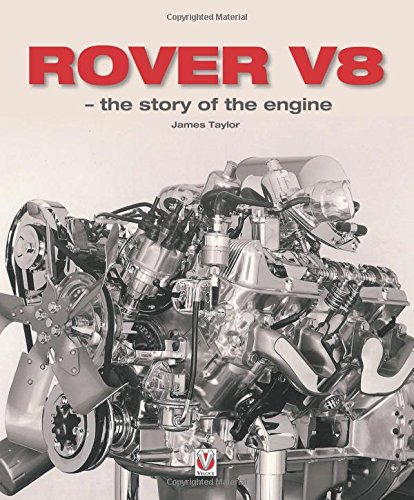
Rover V8 the Story of the Engine tells the fascinating story of the engine that created a legend in its own lifetime. Starting life as a General Motors design in 1961, but withdrawn three years later in favour of cheaper technology, it reached Rover by chance in the mid-1960s. Few other British companies then had V8 engines in production, and Rover immediately gained a special status when the V8 entered UK production during 1967. This was an extraordinarily compact design and also extraordinarily light, thanks to its all-aluminium alloy construction. It was not a temperamental high-performance engine, but had a well-proven and simple architecture that made it both reliable and easy to work on. Small wonder, then, that the Rover V8 was bought by sports car makers who needed a light, compact and powerful engine. Small wonder that Rover kept it in production for so long, developing multiple different sizes and versions. Small wonder that the engine is still revered by Rover and Land Rover enthusiasts today, or that its popularity as an aftermarket conversion has ensured that it remains in small-volume production, half a century after entering production in the UK.

Three quarters of a million people are in a plane somewhere right now. Many millions travel by air each day. For most of us, the experience of being in an airport is to be endured rather than appreciated, with little thought for the quality of the architecture. No matter how hard even the world’s best architects have tried, it is difficult to make a beautiful airport.
And yet such places do exist. Cathedrals of the jet age that offer something of the transcendence of flight even in an era of mass travel and budget fares. Here are twenty-one of the most beautiful airports in the world.
The book features:
Wellington International Airport, ‘The Rock’ shaped like the dangerous cliffs of a local legend
Kansai International Airport, Renzo Piano’s gigantic project built on three mountains of landfill
Shenzhen International Airport, a manta ray shaped terminal putting this booming region on the map
Daocheng Yading Airport, the world’s highest civilian airport in the middle of the Tibetan mountains
Chhatrapati Shijavi International Airport, rising from the slums of Mumbai like a Mogul palace
Queen Tamar Airport, a playfully iconic modern airport nestled in the mountains of Georgia
King Abdulaziz International Airport, the gateway to Mecca resembling a Bedouin city of tents
Pulkovo Airport, mirroring the city of St Petersburg with bridges, squares and art
Berlin-Tegel Airport, ultramodernity, 1970s style
Copenhagen Airport, an icon from the golden age of air travel
Franz Josef Strauß Airport, sober and easy to negotiate, Munich’s model airport
Paris Charles du Gaulle Airport, the brutalist icon that launched the career of airport architect Paul Andreu
London Stansted Airport, Norman Foster’s return to the golden age of air travel
Lleida-Alguaire Airport, a relic of Catalonia’s early 21st century building boom
Madrid-Barajas Airport, Richard Rogers and Antonio Lamela’s calm, bamboo-panelled Terminal 4
Marrakesh Ménara Airport, a blend of 21st century construction and traditional Morrocan design
Santos Dumont Airport, Rio de Janeiro’s modernist masterpiece
Carrasco International Airport, Rafael Viñoly’s design inspired by the sand dunes of his native Uruguay
Malvinas Argentinas International Airport, echoing the mountains and glaciers of Tierra del Fuego
John F Kennedy International Airport, Eero Saarinen’s glamorous jet-age TWA terminal
Spaceport America, a vision of the future in the New Mexico desert

When we reflect upon the history of Italian coachbuilding and design, it is impossible to ignore the De Tomaso / Giugiaro Mangusta. It was stunning from every angle; in both art and engineering, it challenged and defined every aspect of motor car design in the mid-1960s while solving the problems associated with mid-engined design with beauty, grace, and authority. By the dictates of its creator, the Mangusta would be a race car for the street, its chassis based on a contemporary competition car. By the hand of one of the greatest automotive designers in Italy, it would be wide, low, sleek, and of perfect line.
Ex-GM Designer Dick Ruzzin knows this well, as did others whose lives were devoted to automotive architecture. The Detroit doyens of design, William L. Mitchell at GM and Gene Bordinat at Ford, realized immediately that the Mangusta was one of the most advanced and beautiful cars in the world. Both ordered a specially tailored Mangusta for their personal use, and Mitchell had his equipped with a Chevy V8.
Ruzzin has owned the ex-Mitchell Mangusta for the last forty-seven years. He spent years in Turin and interviewed many of those who still remembered how the Mangusta came to be created. Writing with passion, experience, and knowledge, Ruzzin has expertly authored the only book specifically about the design of the Mangusta.
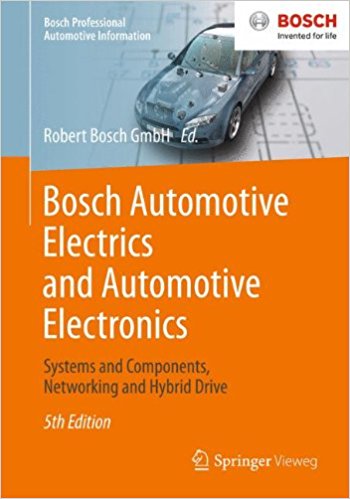
5th ed.
This is a complete reference guide to automotive electrics and electronics. This new edition of the definitive reference for automotive engineers, compiled by one of the world’s largest automotive equipment suppliers, includes new and updated material. As in previous editions different topics are covered in a concise but descriptive way backed up by diagrams, graphs, photographs and tables enabling the reader to better comprehend the subject. This fifth edition revises the classical topics of the vehicle electrical systems such as system architecture, control, components and sensors. There is now greater detail on electronics and their application in the motor vehicle, including electrical energy management (EEM) and discusses the topic of inter system networking within the vehicle. It also includes a description of the concept of hybrid drive a topic that is particularly current due to its ability to reduce fuel consumption and therefore CO2 emissions.This book will benefit automotive engineers and design engineers, automotive technicians in training and mechanics and technicians in garages. It may also be of interest to teachers/ lecturers and students at vocational colleges, and enthusiasts.
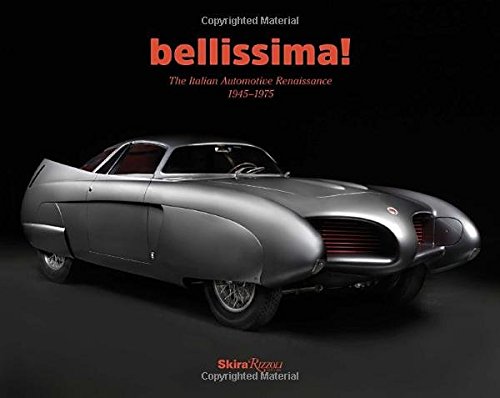
SOLD OUT
A beautifully designed volume devoted to the most collectible and rare mid-century Italian cars and motorcycles. Bellissima! presents some of the most breathtaking Italian-designed automobiles and motorcycles of the post–World War II era, a series of visionary designs that thrilled the world and signaled a period of remarkable industrial rebirth. All-new photographs featuring pioneering masterpieces by Ferrari, Maserati, Lamborghini, Alfa Romeo, and others trace a remarkable lineage of design that captivated buyers and greatly influenced mid-century industrial design, architecture, aeronautics, furniture, and fashion. Created for the privileged few, these luxurious, custom-built machines embodied speed, style, and grace and exhibited a level of artistry and craftsmanship unparalleled at the time.Texts by noted automotive writers illuminate the history of this period and the impact of these designs, covering such themes as berlinetta coupes, aerodynamics, advanced mid-engine cars, wedge-shaped automobiles, and coachwork designs for domestic and non-Italian automakers.Today, Italian-designed cars from this era are among the most highly valued automobiles in existence. More than half a century after their construction, they continue to intrigue and excite all who see them.

The rise of the American diner is the most savory of phenomenons, where classic architecture, a friendly face behind the counter, and some mean pie all combined to make these little roadside stops a treasured part of history.
From the early days when Walter Scott brought his horse-drawn lunch wagons through the streets to the heyday of mass-produced chrome and neon diners in the 1950s, The American Diner offers a full blue-plate special of nostalgia for all those who loved the counter culture of these great eateries.
More than 250 historical and bright colorful photographs help remind us of life before fast food, and generous helpings of classic advertisements, cool collectibles, and architectural highlights also highlight the era.
Diners from coast to coast are featured, giving readers a trip to some of the best stainless-steel and neon diners that still dot the American roadways.
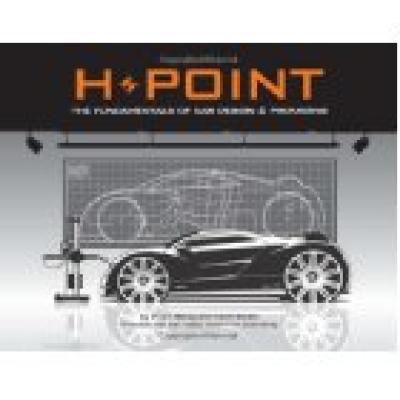
The ultimate reference guide for car designers and automotive engineers! H-Point was written by the pioneer of the Vehicle Architecture course at Art Center College of Design, Stuart Macey along with the Director of Advanced Mobility Research, Geoff Wardle. Currently used as the educational handout for the transportation design students at Art Center, it will now be available to aspiring car creators everywhere, clearly organizing the packaging standards that apply to car and truck design; along with insightful graphic explanations, this book demystifies the automotive design process and allows designers access to an illustrious careers worth of knowledge.
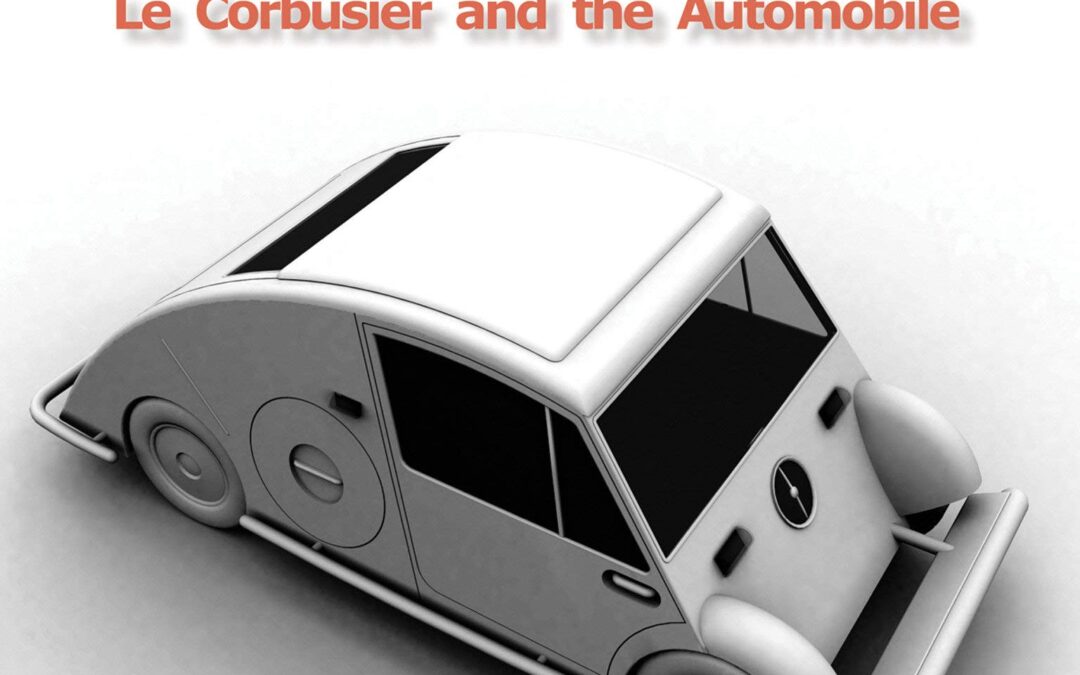
A colorful account of Le Corbusier’s love affair with the automobile, his vision of the ideal vehicle, and his tireless promotion of a design that industry never embraced.Le Corbusier, who famously called a house “a machine for living,” was fascinated—even obsessed—by another kind of machine, the automobile. His writings were strewn with references to autos: “If houses were built industrially, mass-produced like chassis, an aesthetic would be formed with surprising precision,” he wrote in Toward an Architecture (1923). In his “white phase” of the twenties and thirties, he insisted that his buildings photographed with a modern automobile in the foreground. Le Corbusier moved beyond the theoretical in 1936, entering (with his cousin Pierre Jeanneret) an automobile design competition, submitting plans for “a minimalist vehicle for maximum functionality,” the Voiture Minimum. Despite Le Corbusier’s energetic promotion of his design to several important automakers, the Voiture Minimum was never mass-produced. This book is the first to tell the full and true story of Le Corbusier’s adventure in automobile design. Architect Antonio Amado describes the project in detail, linking it to Le Corbusier’s architectural work, to Modernist utopian urban visions, and to the automobile design projects of other architects including Walter Gropius and Frank Lloyd Wright. He provides abundant images, including many pages of Le Corbusier’s sketches and plans for the Voiture Minimum, and reprints Le Corbusier’s letters seeking a manufacturer. Le Corbusier’s design is often said to have been the inspiration for Volkswagen’s enduringly popular Beetle; the architect himself implied as much, claiming that his design for the 1936 competition originated in 1928, before the Beetle. Amado Lorenzo, after extensive examination of archival and source materials, disproves this; the influence may have gone the other way. Although many critics considered the Voiture Minimum a footnote in Le Corbusier’s career, Le Corbusier did not. This book, lavishly illustrated and exhaustively documented, restores Le Corbusier’s automobile to the main text.
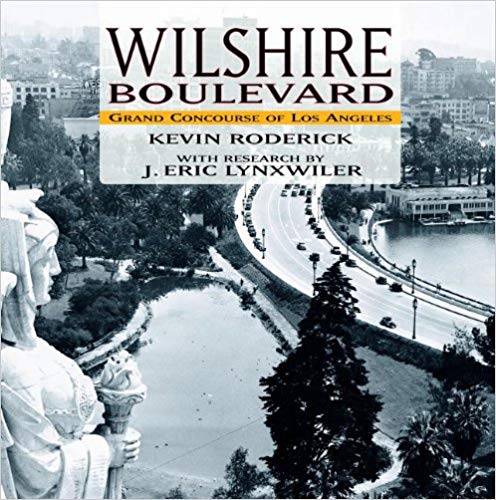
Wilshire Boulevard is the unofficial Main Street of dreams that flows through Los Angeles history. Like Los Angeles itself, Wilshire is an accidental phenomenon created out of civic pride and the yearning of the masses to drive. Its fifteen-mile route to the sea has been called the Fifth Avenue of the West and the Champs Elysees of the Pacific. Wilshire’s style, architecture and historic prominence are recorded in 175 photographs, so readers understand the fascinating cultural geography of the first auto-dependent metropolis.
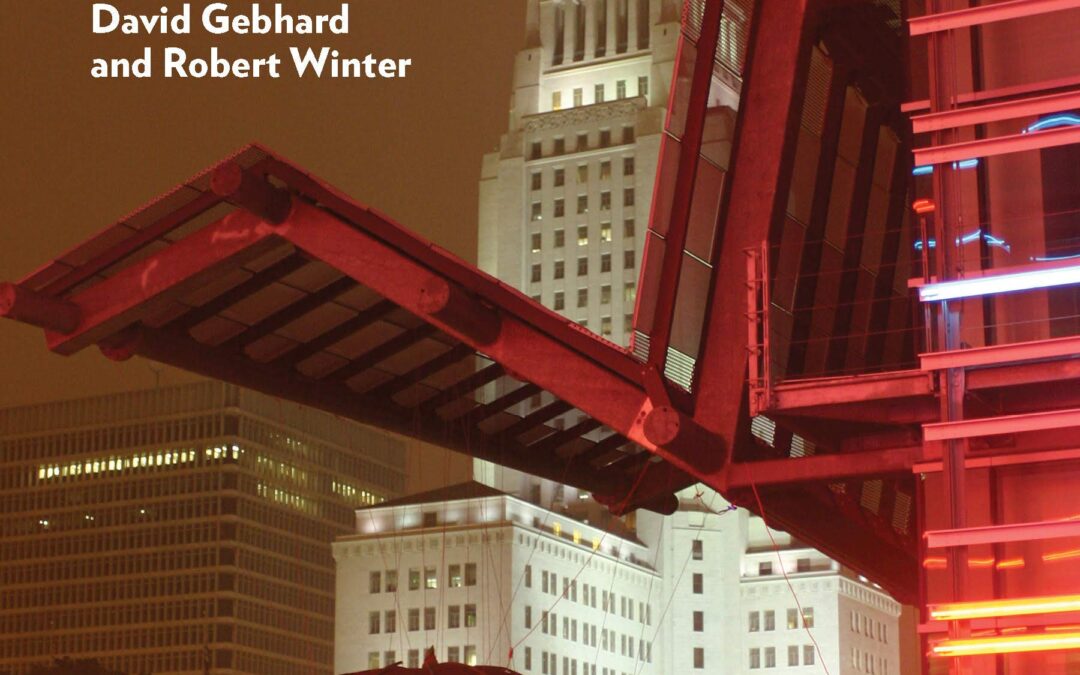
The map may not be the territory, and the word may not be the thing, but this guide is as close as it gets.
Since its first publication by the Los Angeles County Museum of Art in 1965, this seminal vade mecum of Los Angeles architecture has explored every rich potency of the often relentless, but sometimes―as the authors have captured here―relenting L.A. cityscape. Revised extensively and updated rigorously since its fifth edition published in 2003, The Architectural Guidebook to Los Angeles now contains ninety-six sections organized in thirteen geographic chapters, boasting over 200 new additions to over thousands of entries cataloging every crease of Los Angeles County’s metropolitan sheath.
Originally written by leading architectural historians Robert Winter―described by Los Angeles Magazine as both the “spiritual godfather” and “father” of L.A. architecture―and the late, great David Gebhard, the guide has been revised and edited for a sixth edition by award-winning L.A. urban walker and Winter’s trusted collaborator Robert Inman. Nathan Masters, historian and Emmy-award-winning host, producer, and managing editor of KCET’s Lost LA, writes the foreword.
The Architectural Guidebook to Los Angeles, hailed by many as the built L.A. opus, explores the man made structures, gardens, parks, and other physical features of a fulgurous Los Angeles. With singular wit and brio, the authors artfully steward readers through all regions and styles, from the Spanish Mexican Period to Postmodern, American Take-over to High Tech, and Beaux-Arts to Craftsman. Sites covered begin with the missions of Spanish California and end with projects completed in 2017.
Dilettantes and experts, practitioners and students, aficionados and osmotic natives alike: all are blood type-compatible with this rich and peerless Bible for architecture enthusiasts. All of its own ilk, this book is thick and alive with a tone of its own making―and doing. A unique style of writing renders the guide simultaneously funny, tasteful, and historically-comprehensive, all with equal measure. Gebhard and Winter fill in the diegetic blanks with a droll eye. More than a critical reference for the bookshelves of scholars, enthusiasts, and practitioners alike, Architecture in Los Angeles is a faithful snapshot of the city as she lives and breathes.
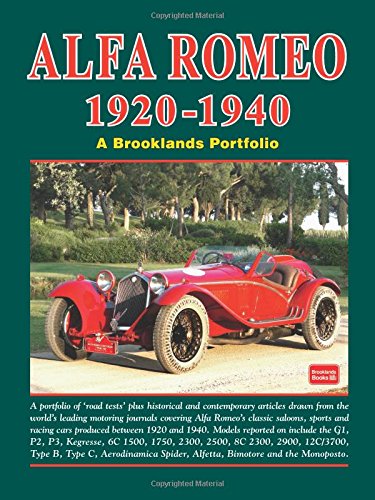
A portfolio of road tests plus historical and contemporary articles drawn from the world’s leading motoring journals covering Alfa Romeo’s classic saloons, sports and racing cars produced between 1920 and 1940. Models reported on include G1, P2, P3, Kegresse, 6C 1500, 1750, 2300, 2500, 8C 2300, 2900, 12C/3700, Type B, Type C, Aerodinamica Spider, Alfetta, Bimotore and the Monoposto. The company that became Alfa Romeo in 1920 was founded as Societa Anonima Italiana Darracq (SAID) in 1906 by the French automobile firm of Alexandre Darracq with the backing of some Italian investors. Sales slowed of these Italian Darracq’s and subsequently in 1909 a new company was founded named A.L.F.A. (Anonima Lombarda Fabbrica Automobili), initially still in partnership with Darracq. The first non-Darracq car, produced in 1910 by ALFA was the 24 HP, designed by their new employee, Giuseppe Merosi. It was a winner and sold 50 cars in its first year. In August 1915 the company came under the direction of Neapolitan entrepreneur Nicola Romeo, who, in 1915, went over to produce military hardware for the Italian and Allied war efforts. In 1920, the company name was changed to Alfa Romeo and car production started again with the Torpedo 20-30 HP which became the first car to carry the new logo. Their first success came that year when Giuseppe Campari won at Mugello and continued with second place in the Targa Florio driven by Enzo Ferrari. Giuseppe Merosi continued as head designer, and the company continued to produce solid road cars as well as successful race cars (including the 40-60 HP and the RL Targa Florio). In 1923 Vittorio Jano was lured away from Fiat, partly thanks to the persuasion of a young Alfa racing driver named Enzo Ferrari. He replaced Merosi as chief designer, who went on to Isotta Fraschini. The first Alfa Romeo under Jano was the P2 Grand Prix car, which in 1925 won the inaugural world championship for Grand Prix cars. For Alfa road cars Jano developed a series of small-to-medium-displacement 4-, 6-, and 8-cylinder inline power plants based on the P2 unit that established the classic architecture of Alfa engines. They featured light alloy construction, hemispherical combustion chambers, centrally located plugs, two rows of overhead valves per cylinder bank and dual overhead cams. These designs proved to be both reliable and powerful. Enzo Ferrari turned out to be a better team manager than driver, and when the factory team was privatised, it became Scuderia Ferrari. When Ferrari left Alfa Romeo, he went on to manufacture his own cars. Tazio Nuvolari often drove for Alfa during this period, winning many races for them prior to the Second World War. In 1928 Nicola Romeo left Alfa which soon afterwards went bankrupt when their defence contracts came to an end. Late in 1932 Alfa Romeo was rescued by the Italian government which took over effective control and Alfa which subsequently became a national emblem. During this period the company produced wonderfully successful sports cars which for many years excelled at Le Mans and built beautiful bespoke vehicles for the wealthy. The elegant bodies for these models were normally built by Touring of Milan or Carrozzeria Pinin Farina and era peaked with the legendary Alfa Romeo 2900B Type 35 racers. To put production figures into perspective, in the six years between 1934 and 1939, Alfa Romeo built 1994 cars, an average of 332 a year, a little less than one a day.
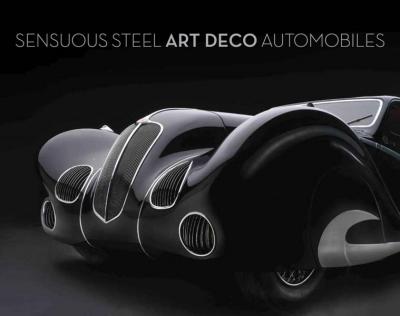
CURRENTLY SOLD OUT – AWAITING PUBLISHER RE=PRINT
This book was published to accompany an exhibit of Art Deco-styled cars shown at the Frist Center for the Visual Arts in Nashville, Tennessee, from June 14 through September 15, 2013. All 20+ cars and motorcycles that were selected for the exhibit are presented here through the studio photography of Peter Harholdt and printed to the highest standard on extra-heavy paper stock.
Exhibition curator Ken Gross, along with fellow automotive historians Richard Adatto and Jonathan A. Stein, provide historical information about these unique cars, and art and architecture expert Thomas Mellins adds a fascinating essay about the emergence of Art Deco as a recognized style of expression. Includes:
Frank Lloyd Wright’s Cord L-29 Cabriolet
Two Figoni and Falaschi-bodied Delahayes
Jordan Model Z Speedway Ace
Pierce-Arrow Silver Arrow
Edsel Ford’s Model 40 Speedster
Voisin Type C27 Aerosport Coupe
Stout Scarab
Indian and Henderson motorcycles
Chrysler Airflow and Thunderbolt concept
Talbot-Lago T-150-C-SS Teardrop Coupe
The Bugatti Type 57C formerly owned by the shah of Iran, and many more
Hardcover | 12 x 9.5 | 112 pages

The venerable Chevy big-block engines have proven themselves for more than half a century as the power plant of choice for incredible performance on the street and strip. They were innovators and dominators of the muscle car wars of the 1960s and featured a versatile design architecture that made them perfect for both cars and trucks alike. Throughout their impressive production run, the Chevy big-block engines underwent many generations of updates and improvements. Understanding which parts are compatible and work best for your specific project is fundamental to a successful and satisfying Chevy big-block engine build.
In Chevy Big-Block Engine Parts Interchange, hundreds of factory part numbers, RPOs, and detailed color photos covering all generations of the Chevy big-block engine are included. Every component is detailed, from crankshafts and rods to cylinder heads and intakes. You’ll learn what works, what doesn’t, and how to swap components among different engine displacements and generations. This handy and informative reference manual helps you to create entirely unique Chevy big-block engines with strokes, bores, and power outputs never seen in factory configurations. Also included is real-world expert guidance on aftermarket performance parts and even turnkey crate motors. It s a comprehensive guide for your period-correct restoration or performance build.
John Baechtel brings his accumulated knowledge and experience of more than 34 years of high-performance engine and vehicle testing to this book. He details Chevy big-block engines and their various components like never before with definitive answers to tough interchange questions and clear instructions for tracking down rare parts. You will constantly reference Chevy Big-Block Parts Interchange on excursions to scrap yards and swap meets, and certainly while building your own Chevy big-block engine.
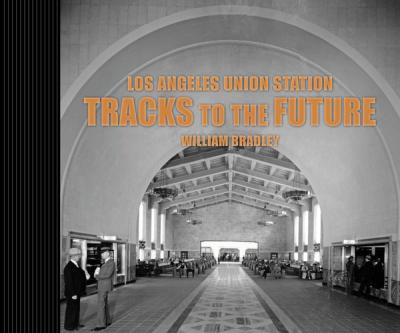
“Los Angeles Union Station- opened May 7, 1939, after days of celebration- was the last great train station built in the United States. Intended as a grand portal to a grand Los Angeles, it was an anomaly, built at a time when America was eager to drive or fly to its chosen destinations. Protected by early inclusion on the National Registry of Historic Places for its iconic architecture, Los Angeles Union Station has had an astonishing and unpredictable rebirth. As the city modernizes its public transportation system linking the culturally and geographically diverse communities Southern California , Union Station-in all its Mission Revival glory-is suddenly the hub of the country’s newest light rail and subway system, serving hundreds of thousands of people each week. . Where Pullman cars and Harvey Girls once served commuters, where the Super Chief and the Coast Starlight, Streamliners and Domeliners converged, Los Angeles Union Station is now a living, breathing center of transportation.
Author William Bradley relates a rich history of fierce battles, cultural relocation, and astounding financial risks culminating in one of California’s most important stories. Augmenting his words with vintage images, Bradley not only shares the tale of the terminal, but of the trains that rode its tracks- those 1939 tracks to the future.
144 pages
150+ rare black and white and color images
12” X 10”
”
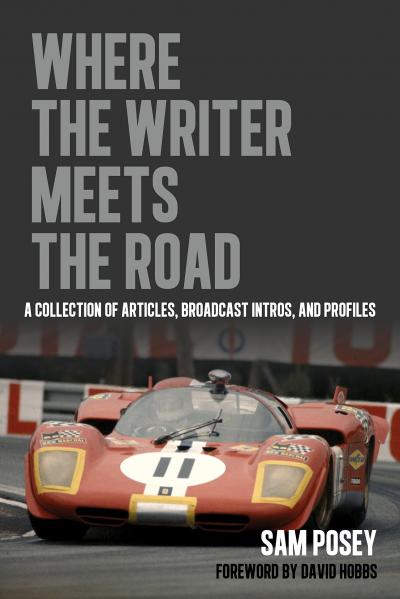
SOLD OUT awaiting second printing
For more than 40 years, racing fans all over the world have followed Sam Posey’s unique career as a driver, writer, and broadcaster. Posey wrote his first article for Road & Track in 1968, the same year he drove a Chevrolet Camaro for Roger Penske’s team in the Trans-Am series. In the 1970s he not only won at Sebring and finished on the podium at Le Mans, but also published a highly regarded autobiography.<br<>br>
Posey retired from driving in 1982, but in the years since then his public profile has grown through his articles for Road & Track, Sports Illustrated, and other publications, as well as his work as a television commentator. In Where the Writer Meets the Road, Posey has selected the best of his work in both fields. The result is a remarkably varied mix of short and long pieces on subjects ranging from racing in the rain at Le Mans to test-driving the propeller-driven Wind Wagon created by his uncle Teddy in the 1920s. There are also examples of the shorter broadcast introductions he produced for Formula One grands prix at Spa and Monaco, and even non-automotive events like the Iditarod sled race.
No matter what the venue or circumstances, Posey’s writing captures the excitement of racing as well as an insider’s understanding of how the sport really works, both on and off the track. It also reflects his innate curiosity and enthusiasm for a wide range of non-automotive interests such as painting, art, design and architecture.
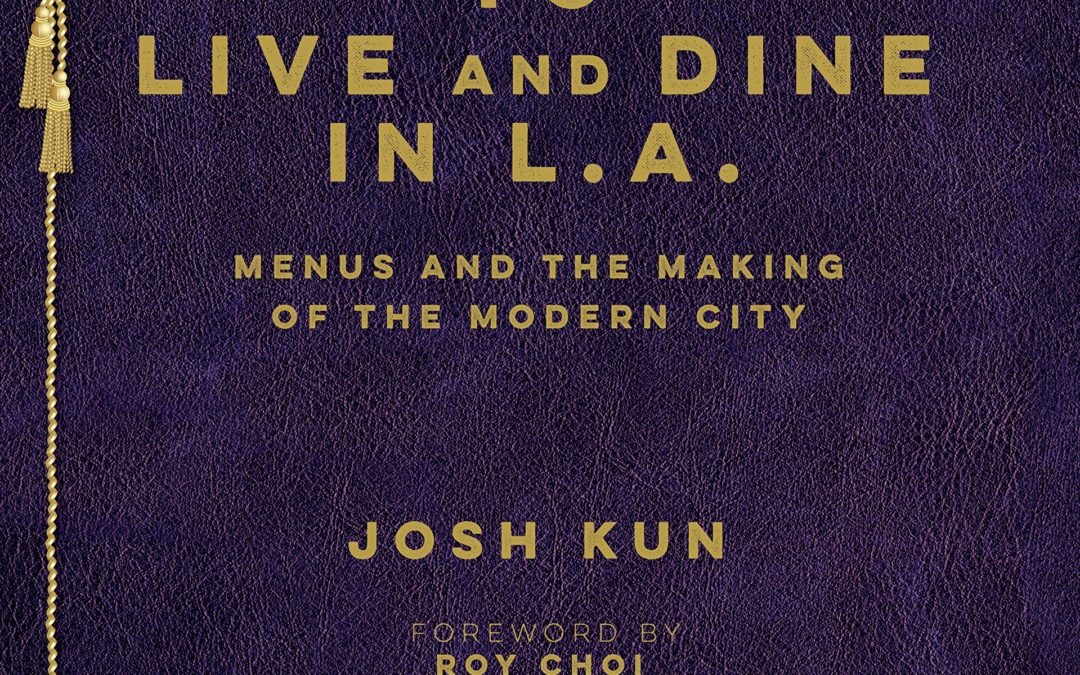
How did Los Angeles become the modern city the world watches? We know some of the answers all too well. Sunshine. Railroads. Hollywood. Freeways. But there’s another often overlooked but especially delicious and revealing factor: food.
Think veggie tacos and designer pizzas, hot dogs on sticks and burgers from golden arches, Cobb Salads and chocolate-topped ice cream sundaes, not to mention the healthiest dishes on the planet. Ask anyone who has eaten in L.A.–the city shapes the tastes that predict how America eats. And it always has.
In its fourth book collaboration with the Los Angeles Public Library and the Library Foundation of Los Angeles, Angel City Press releases To Live and Dine in L.A.: Menus and the Making of the Modern City by Josh Kun.With more than 200 menus–some dating back to the nineteenth century–culled from thousands in the Menu Collection of the Los Angeles Public Library, To Live and Dine in L.A. is a visual feast of a book.
But it’s more. Much more.
In his detailed history, author Josh Kun riffs on what the food of a foodie city says about place and time; how some people eat big while others go hungry, and what that says about the past and now. Kun turns to chefs and cultural observers for their take on modern: Chef Roy Choi sits down long enough to say why he writes “some weird-ass menus.” Pulitzer Prize-winning critic Jonathan Gold looks at food as theater, and museum curator Staci Steinberger considers the design of classic menus like Lawry’s. Restaurateur Bricia Lopez follows a Oaxacan menu into the heart of Koreatown.
The city’s leading chefs remix vintage menus with a 21st-century spin: Joachim Splichal, Nancy Silverton, Susan Feniger, Ricardo Diaz, Jazz Singsanong, Cynthia Hawkins, Micah Wexler, Ramiro Arvizu and Jaime Martin del Campo cook up the past with new flavors. And, of course, the menus delight: Tick Tock Tea Room, Brown Derby, Trumps, Slapsy Maxie’s, Don the Beachcomber, and scores more.
Kun tackles the timely and critically important topic of food justice, and shows how vintage menus teach us about more than just what’s tasty, and serve as guides to the politics, economics, and sociology of eating.
America is a dining-out nation, and our research indicates that L.A. has long been one of its top dining-out towns. The Library’s collection is a living repository of meals past, an archive of urban eating that tells us about the changing historical role of food in the city, which is to say it tells us about just about everything that food touches: economics, culture, taste, race, politics, architecture, class, design, industry, gender, to name just some of the themes that recur on menu pages.
Kun challenged contributors to tackle subjects that readers may have never contemplated. As the renowned L.A. chef Roy Choi points out in his Foreword to To Live and Dine in L.A.:
The more I looked at the menus, the more they told me about the city and how neighborhoods developed. But it was the menus that I couldn’t find that forced me to ask questions about how life really was. I started to think about how the city is now and if those missing menus were a reflection of life just as it is now. Were these menus of the affluent and middle-class? Were the working classes even eating with menus, or were they mostly eating at stands and carts? Were there disparities and access problems just like today? To Live and Dine in L.A. is the first book of its kind–the definitive way to read a menu for more than just what to order. It’s about how to live. And how to dine. In L.A.



















